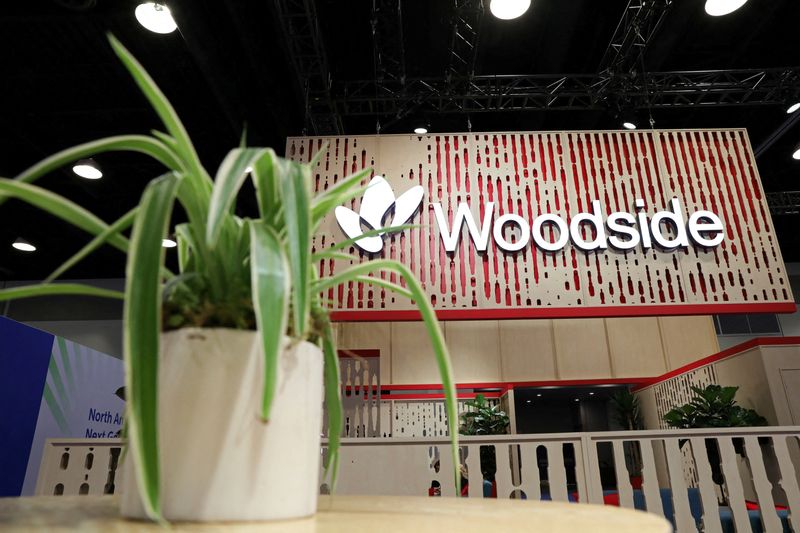By Emily Chow
SINGAPORE (Reuters) - Australian energy companies Woodside and Santos announced on Dec. 7 they are in preliminary talks to merge, a tie-up that would come amid a wave of consolidation in the global energy sector.
If Woodside swallows up Santos, it would be the largest corporate deal in Australia for several years. The combined entity would become the biggest liquefied natural gas (LNG) producer in Australia, which is the world's No. 2 supplier of the superchilled fuel.
WHAT WOULD THE COMBINED ENTITY LOOK LIKE?
The enlarged Woodside would have a market value of roughly $50 billion and annual production of 260 million barrels of oil equivalent (boe).
LNG would account for 53% of production, while pipeline gas would take up 24% of output. The remaining 23% of output would be crude oil and condensates production, based on the two companies' production in 2022.
With Santos in the fold, Woodside would overtake TotalEnergies (EPA:TTEF) and Malaysia's Petronas to become the world's sixth largest LNG producer, with output at over 16 million metric tons per year.
The LNG powerhouse would rank only behind QatarEnergy, Cheniere Energy, Shell (LON:RDSa), Exxon Mobil (NYSE:XOM) and Chevron (NYSE:CVX), according to estimates from analysts including Bernstein Research, based on 2023 production levels.
The new entity would have assets in Australia, Alaska, the Gulf of Mexico, Senegal, Trinidad and Tobago and Papua New Guinea, with overseas output accounting for nearly a third of combined total production.
WHICH ASSETS COULD BE SOLD?
Analysts say a merged entity would control about 26% of the gas market on Australia's east coast, home to much of the country's population, and 35% in Western Australia, which could draw concern from the country's competition regulator.
The Australian Competition and Consumer Commission (ACCC) said it would consider whether a public merger review into the impact on competition was required if the deal goes ahead.
A source close to the merger talks said the companies could overcome regulatory concerns by selling some smaller domestic assets. Analysts said Santos' Varanus Island asset in Western Australia, and its Cooper Basin gas business on the east coast could be candidates for sale.
Woodside has been looking to sell its stakes in the mature Macedon gas field and Pyrenees oil project off Western Australia, the Australian Financial Review reported. Both of those assets are co-owned by Santos.
WHAT WOULD BE THE IMPACT ON THE GLOBAL LNG MARKET?
With Australia in close proximity to top LNG buyers in northeast Asia, the merged group would have more bargaining power when dealing with buyers, given its bigger portfolio with more delivery options and flexibility from more terminals, analysts said.
The combined group would operate four LNG plants in Australia - North West (TSX:NWC) Shelf, Pluto, Darwin and Gladstone, and have a stake in Chevron-led Wheatstone.
For Woodside the big prize would be major stakes in the two LNG projects in Papua New Guinea - Exxon-led PNG LNG and TotalEnergies-led Papua LNG, which is up for a final investment decision in 2024.

"It will give the new company a greater capacity to invest, but I think the bigger impact will be in creating a larger LNG portfolio player which will be able to challenge the oil majors through multiple LNG export hubs," said Bernstein analyst Neil Beveridge.
Offtakers of LNG from Woodside and Santos projects include Japan's JERA, Tokyo Gas and South Korea's Kogas.